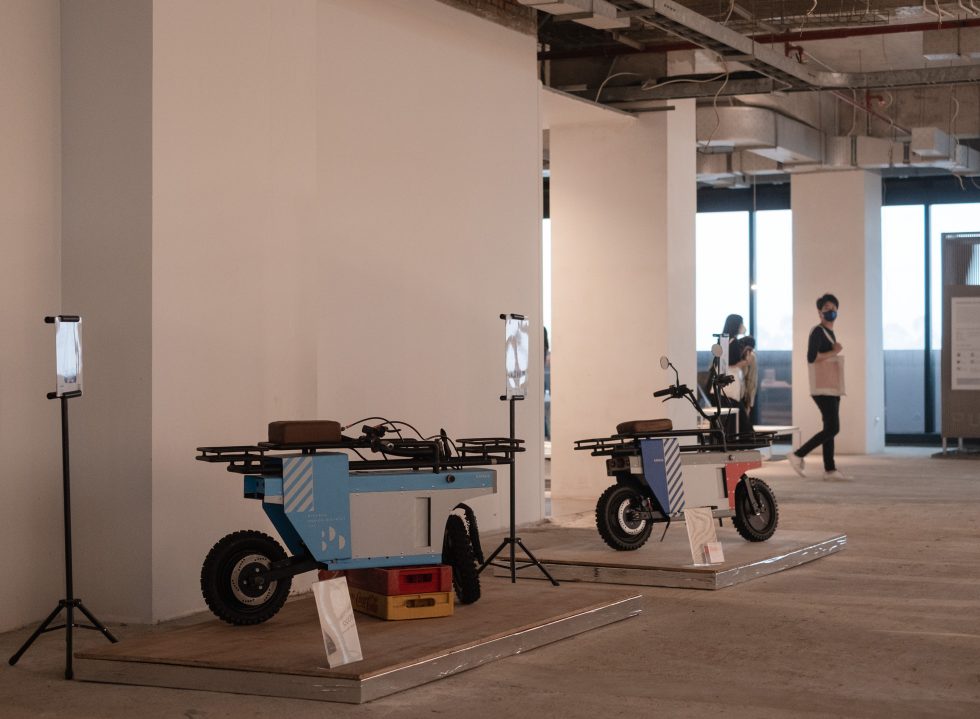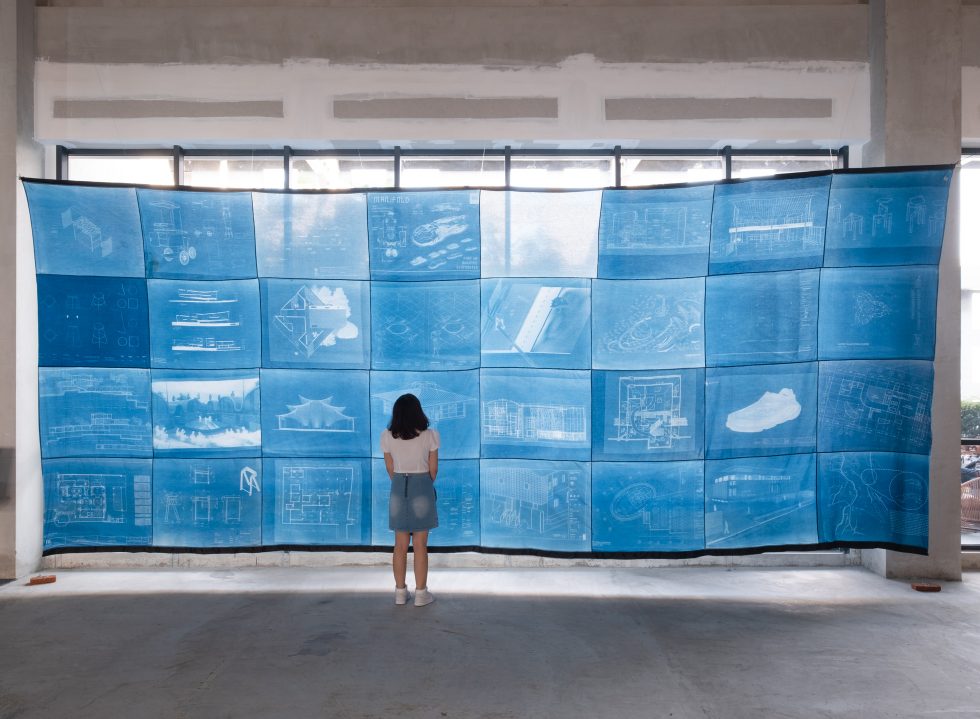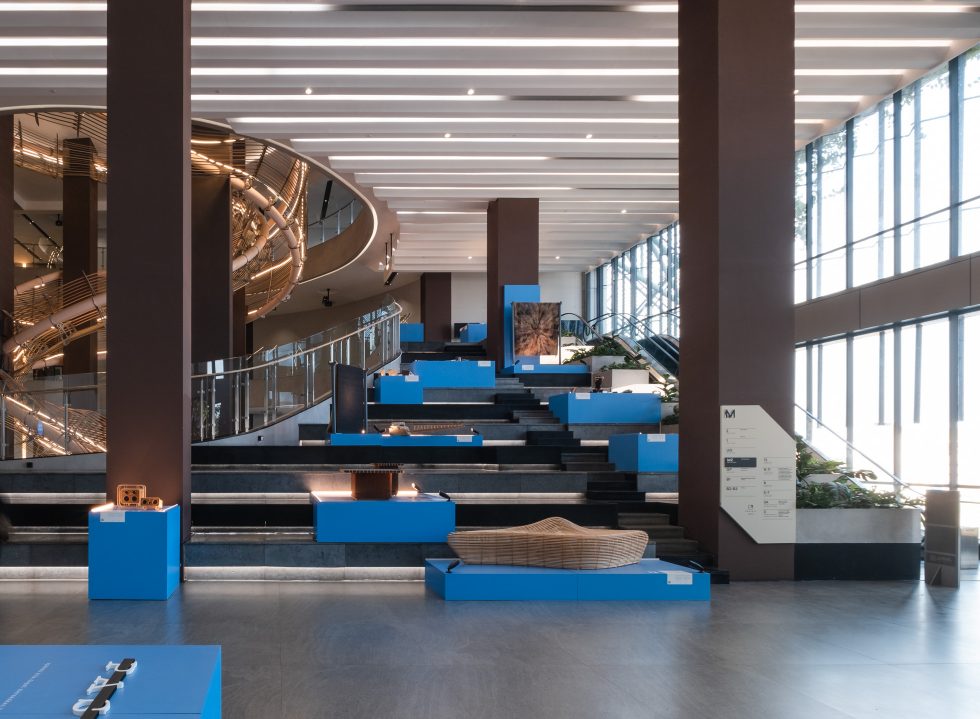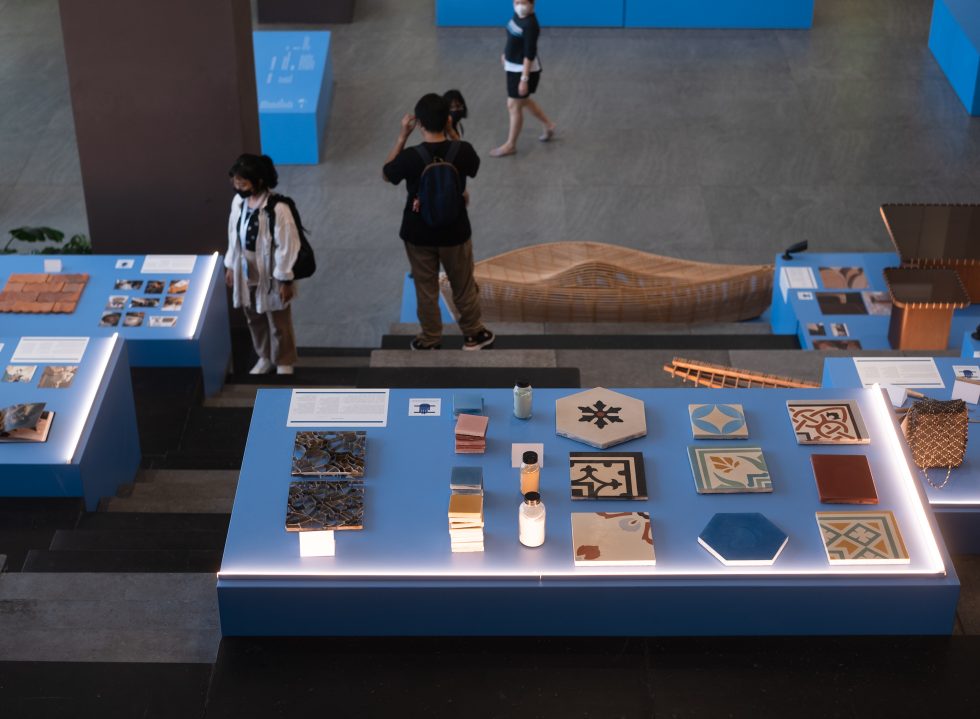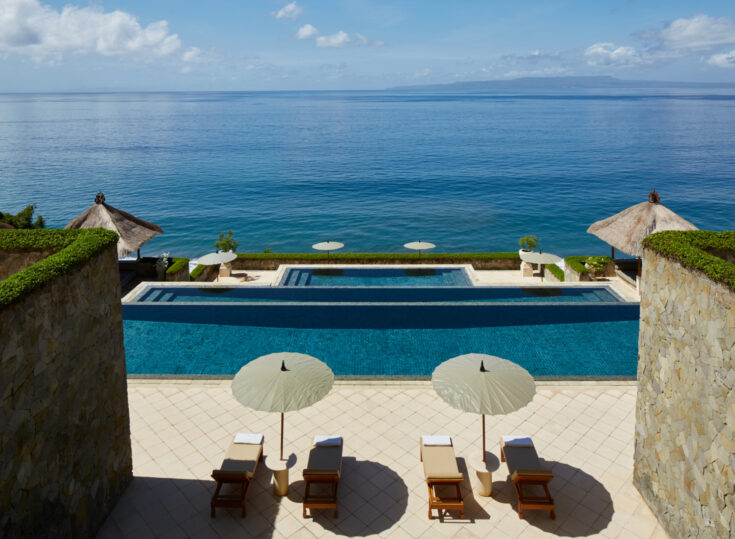“Rapid digitalization and development. Climate change. In the midst of rapid changes and shifts in the urban narrative, what will the future look like?” Hermawan Tanzil, one of the curators for Bintaro Design District (BDD) recalled discussing the theme for what was supposed to be the following year’s event at the end of 2019.
He continued, “Although the pandemic pushed this back by two years, the message seemed more relevant than ever. It felt very fitting to ask again—this time more urgently with how things are changing—what is our vision for the future?” Rippled throughout the 11-day event, the theme ‘Common Future’ was stretched into a curation of different mediums, cross-industry collaborations, workshops and exhibitions from 14 to 24 September.
Prompting the question, curators slash architects Andra Matin, Budi Pradono, Danny Wicaksono, and graphic designer Hermawan Tanzil called on the city’s established and emerging creative thinkers and designers to challenge the role of design in addressing these social issues and exploring solutions through an exchange of ideas.
Danny added, “I think our hope for this year’s BDD was for designers to realise that their work today can impact the future, be it good or bad, and how together they can contribute and collaborate to solve real existing problems and establish a better future.”
Converting multiple areas and public spaces across the district of Bintaro and Tangerang into an interactive exhibition space, dominant themes include waste management, the much-needed solitary act of reflection and its growing need in future spaces. Manifested into different forms, there were the maze-like installations in South 78, Gading Serpong that addresses the need of connecting with your inner child and the idea of play, a collaborative work from Budi Pradono Architects, Arafura Media Design and Waktunya Main.
In the same building, ‘Paska Daksa‘ pays tribute to traditional resources and modes of upcycling as a way to introduce and uplift the value of handcrafts. It is an initiative pulled together by creative practitioners working across textiles and product design as they explore materials and methods through an exhibition and workshops.
Founder of upcycling brand Threadapeutic, Nagawati Surya—who was involved in the exhibition, talk show and workshops—shared how, “It’s reassuring when people from different backgrounds come together for a common vision, to bring about a change in mindset, in this case, craft. It’s also a great way to showcase to the public that when thoughtfully designed and made, these ‘waste’ materials can be just as good or even better than what they’re used to.”
At Kopi Manyar, there was ADGI (The Indonesian Association of Graphic Designers)’s interpretation of uncertainty, expressed through visual designs and illustrations hung on the white walls. On the same block, Andra Matin’s ‘Pameran Rumah’ showcased over 40 models of residential homes he designed over the course of the pandemic—a meditation of the shift in living habits seen through the pandemic.
Nearby on the 15th floor of Graha Paramita II, rows of chairs, spanning from conceptual to functional or both, greet visitors with some inviting a try. From private collections to unknown designers, the exhibition ‘Kursi’ looked at the often overlooked product and celebrated the century of design and visual language that enveloped them.
The event was also a rare occasion to catch a glimpse inside a few household architecture studios in the city like Studio Ton Ton, Bitte Design Studio and SAiA.arsitek who moved their studio from Gunung Kidul to Bintaro during the pandemic, as well as cross-industry collaborations like the coveted sandwich brand Lunch For My Husband’s new kitchen designed by Djuhara + Djuhara.
Elsewhere, ‘Teduh Pelita’ by Studio Woork and Conture Concrete Lab placed emphasis on the importance of collaboration moving forward, they worked with the band MALIQ & D’Essentials to combine design, music and architecture to realise a collective studio, Mad Haus, which later went on to receive the award for best collaboration.
“It’s special to see so many young participants this year. Almost every submission was proposed as part of a collaboration and reflects the dynamic creative industry we have today. Our hope is that Bintaro Design District this will trigger a positive movement in the creative community, regardless of how small, because we trust that it will continue to grow so long as there is a platform for it,” Hermawan concluded.







